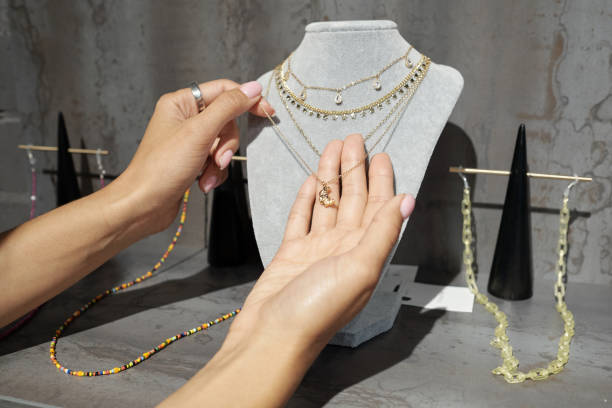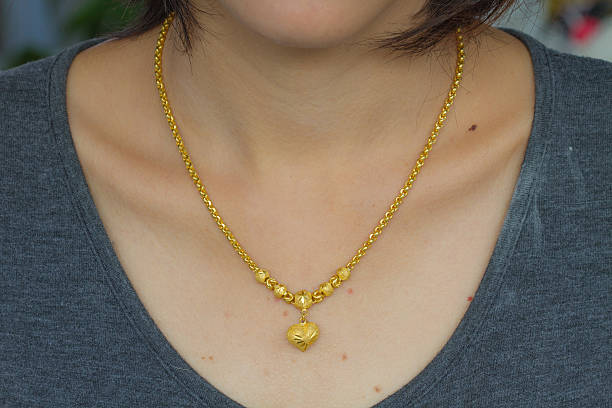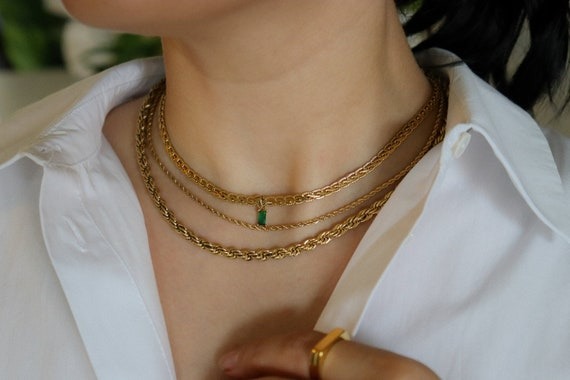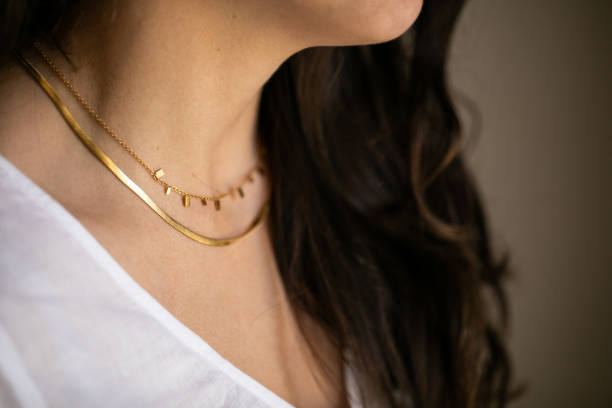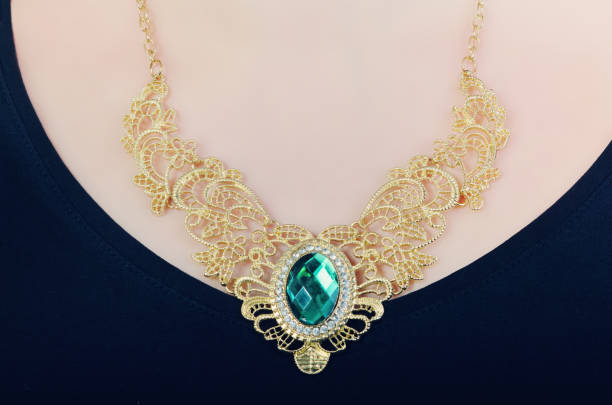To your liking: constitution and temper.
Want an 18k gold necklace womens? Before your excitement rushes you to check out, let’s dive into details for why 18k gold is such a stellar choice. As a matter of fact, there is more glamour in just the glittery end of the things: the chemical make-up and properties are really fascinating.

To begin with, 18k is not pure but 75% gold mixed with 25% of some other metals. For the classic alloy, this will involve silver, copper, zinc, or palladium. The result is that the alloy gives 18k gold an ideal mix of allure and strength.
Why alloy metals? Well, pure gold, being brilliant, is very soft. Imagine having to wear a necklace that deforms the moment someone nudges you. Not exactly fun, right? Alloying it with other metals toughens it, hence perfect for daily wear without losing the shine.
Speaking of luster, those additional metals tinker with color as well. Ever wonder why there’s so much variation on 18k gold? The classic yellow gold owes its sunny hue to the gold-copper mix. White gold? That would be our buddy palladium or nickel, toned down further with a rhodium coating giving it that ice-like gleam. Then comes the rose gold, hued to a soft pink from extra copper.
Enough of the chemistry lesson; now, to talk about how strong it is: just this addition of mixed metals imbues 18k gold with strength beyond what its purer relatives could ever boast. In particular, much harder than 24k gold, without sacrificing too much from the typical malleability of gold. This makes it the dream material for artists and engineers alike when designing jewelry.
Ever notice how rings and necklaces get dinged up? One of the strong points of 18k gold is that it’s less apt to suffer from nicks and blemishes than purer gold. That beautiful necklace the ladies flaunt made out of 18k gold will be beautiful much longer and will stand the wear and tear of everyday use.
Wear and tear: talking of wear and tear, 18k gold is comfortable to wear. With way less alloy than, for instance, 14k gold, it generally doesn’t give skin irritations. If your skin is super sensitive, you may want to look at a gentler option like 18k gold.
Bling in your brain yet? Okay, now let’s nerd out for a little more. There’s this thing with “patina”. As gold ages, this subtle, almost imperceptible layer forms, really giving it that lovely, vintage, lived-in look, like your fave jeans getting more character over time. 18k gold jewelry benefits from patina development too, adding subtle charm into its years.
Another fun fact is that, because 18k gold has a very high content of gold, it retains that deep, rich hue closer to pure gold. That is not all in aesthetics; for those that look at legacy value or the angle of investment, things made from 18k gold typically hold more value since it has more gold in it.
Alright, enough of my rambling. For these reasons, one can see why 18k gold is all the rave. It’s brilliant, strong, comfortable, and versatile-all in one. The Swiss Army knife of all precious metals! Next time someone says to you, “Hey, that’s a nice 18k gold necklace for women you are wearing,” you can casually give him knowledge and have him say, “Whoa, never knew that!
How Its Properties Shape Choices in Jewelry
Let’s talk about gold-18k gold. What’s the big deal, really, with people going gaga over an 18k gold necklace a woman wants to wear? Well, there is a whole lot behind this shiny metal that draws folks like a moth to a flame.
First things first-what’s the deal with 18k gold compared to its other shiny sibling, 24k gold? It ain’t rocket science, though. Pure gold, or 24k gold, is super soft-outta this world, really soft. Imagine making a ring outta butter-ends up all squished, right? That’s why jewelers mix gold with other metals to give it some backbone.
Now, 18k gold means 18 parts gold and 6 parts other metals. Math is not really my favorite, but that is 75% gold right there. These other metals also don’t just “beef it up” but add a little zing in color and durability.
The tale of ancient Egypt: kings and queens strut their bling simply because. They had noncorrosive gold, however, so that means all necklaces, rings, and crowns of theirs would remain equally as glitzy after millennia. What a steal, right?
The softer sides of the 18k mean that when you’re banging it around, it’s less likely to scratch than if it is pure gold. OK, now, imagine this: You’re wearing that ravishing necklace, and then you suddenly knock it against a table. No panic attacks-18k gold’s got your back!
And then there are the colors: whereas 24k is that deep, yellow gold, almost garishly yellow, 18k throws in some shades, including white gold and rose gold-you name it. This is like an artist’s palette. A white gold engagement ring? Yes! A rose gold bracelet to match your blush? Hell, yeah!
Now, about shades, here is something comical: nickel is that little scamp that invades the mix. As it strengthens, your skin screams back at you-for allergies. Ever gotten an allergic reaction from those cheap pairs of earrings? It could be nickel. Don’t sweat it, though; high-quality 18k gold jewelry usually minimizes nickel in order not to drive your ears into tantrums.
Cut to the chase, right: ever wonder why your grandma guarded that one piece of family jewelry with her life? It’s the durability. 18k gold isn’t just fit for royalty; it wears like royalty, too. I mean, I’ve quite literally seen a piece get passed on generations and still pop out looking hot outta the oven. That’s the kind of legacy 18k gold brings to the table. You may not know that pirates didn’t hoard the metal of gold just for its value in shining bright; it didn’t corrode. Those gold coins in sunken ships lying on the ocean floor are still shiny-new. No shiver me timbers-just science!
So, want to propose? Get her an 18K gold ring; this one barely bends out of shape when life goes haywire, and boy, does it ever get that way! Besides, the mix of metals lends a nice touch of modernism. Your love story deserves that spark, right?
